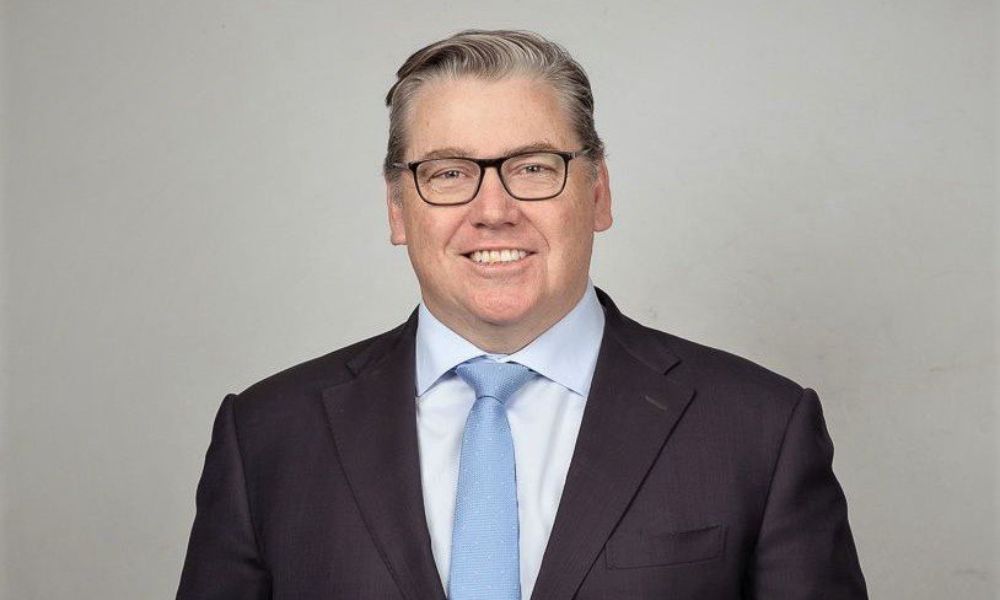IAG’s intermediated division reported as “on track”

IAG’s intermediated division reported as “on track” | Insurance Business Australia
Insurance News
IAG’s intermediated division reported as “on track”
He expects $250 million plus in profits
Insurance News
By
Daniel Wood
When Insurance Australia Group (IAG) released its half year results, the insurer reported its intermediated division “is on track to deliver its insurance profit target of at least $250 million in FY24.”
“That was in line with our expectation and our plans,” said Jarrod Hill (pictured above) in an interview with Insurance Business. Hill is CEO of CGU and WFI and leads Intermediated Insurance Australia (IIA), the trans-Tasman giant’s intermediated business in Australia.
IIA’s insurance profit was $162 million, more than tripling last year’s figure. According to its results report, insurance profit was driven by a higher underlying margin of 9.5%, compared to 5.7% in 1H23. Gross written premium (GWP) was reported as “sound” at 5.8%.
In contrast, IIA’s personal lines GWP grew by more than 22%, including $100 million of premium associated with the new ANZ distribution partnership.
What’s influencing IIA’s results?
IAG’s CEO Nick Hawkins summed up the other factors, both external and internal, playing into the IIA division’s results.
“GWP growth reflected premium increases across Direct Insurance Australia (DIA), Intermediated Insurance Australia (IIA) and the New Zealand business in response to inflation pressures, higher perils, and reinsurance costs,” said Hawkins in the results announcement. “This was partially offset by slightly lower volumes, mainly driven by our IIA business focusing on improved underwriting and pricing.”
Hill elaborated to IB on these ongoing changes.
“We’re starting to get the traction on all the hard work that’s gone in over the last couple of years in reshaping the portfolio [and] the work we’ve done around pricing,” he said.
He said internal processes will no longer complicate doing business.
“That’s where I think we’ll be able to compete with some of the more dynamic underwriting businesses around at the moment,” said Hill.
TBC: more offerings to broker partners
Hill said he expects his firm’s technology improvements to enable the building of more focused products and the capability “to offer a lot more to our broking partners than we can now.”
Towards the end of this year he said IAG expects to launch a new product in the SME property space that will begin significant changes in how IIA engages with brokers.
“Broadly, it’s going to be SME,” said Hill. “It’s going to be in our package space where we’ve got a very unique product called Padlock [CGU Padlock] that covers small to medium size property owners’ business – that’s a priority for us.”
Hill said the offering will help brokers handle property and liability coverages for property owning customers more efficiently.
Investments in the claims area
“We’ve also invested heavily in claims to uplift our claims capability to make sure our customers at their time of need are getting an improved service from us,” he said.
He told IB that across the claims space, IAG is investing in digital capability including automation, data analytics and artificial intelligence. One focus is segmenting claims so simple ones are dealt with quickly.
“80% of claims are simple at the end of the day,” said Rafton. “For that 80%, our focus right now is build and utilize technology and work with our broking partners.”
That includes setting up a digital broker portal.
“Through our broker network in particular, we’re saying to them, ‘Look, here’s the five things we need and if you can provide these things through this digital portal when you lodge the claim we will settle your claim within five days’,” said Rafton.
New Zealand and natural disasters
Across the Tasman, GWP in New Zealand grew by nearly 19% to $2,015 million.
IAG’s New Zealand CEO Amanda Whiting said the results “reflect the progress we have continued to make against our strategic priorities.”
However, she said the 2023 North Island floods and Cyclone Gabrielle events “are still having a profound impact on our communities.”
Hawkins also referred to the impact of natural disasters.
“Since the 2022 floods, we’ve increased our claims team numbers, scaled up our partner workforce, improved our triaging and claims oversight to identify vulnerable customers,” he said.
Are you an insurance broker? What changes could insurers make that would help you do business with them?
Related Stories
Keep up with the latest news and events
Join our mailing list, it’s free!






